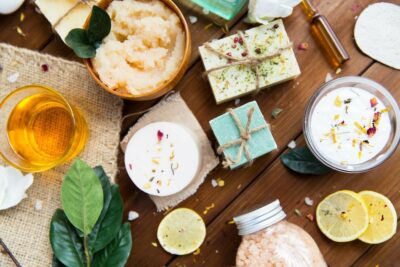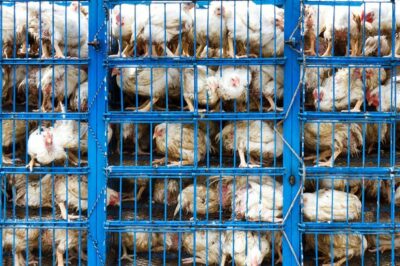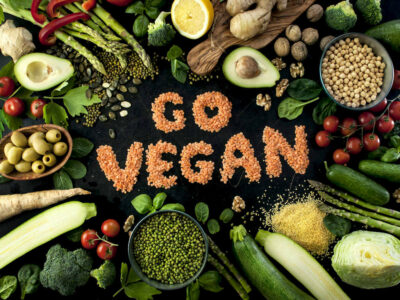Being a vegan isn’t as simple as not eating animals. Fat and proteins from slaughtered animals are commonly found in consumer goods, and are added to everything from foods to medicines to makeup. Worse still, they may go by artificial-sounding names that seem to have nothing to do with the kind of ingredients they actually are. All this can make it tricky for new vegans to ensure we aren’t accidentally consuming or using animal ingredients in everyday products. But there are a few things to look out for that can make being vegan a little simpler.
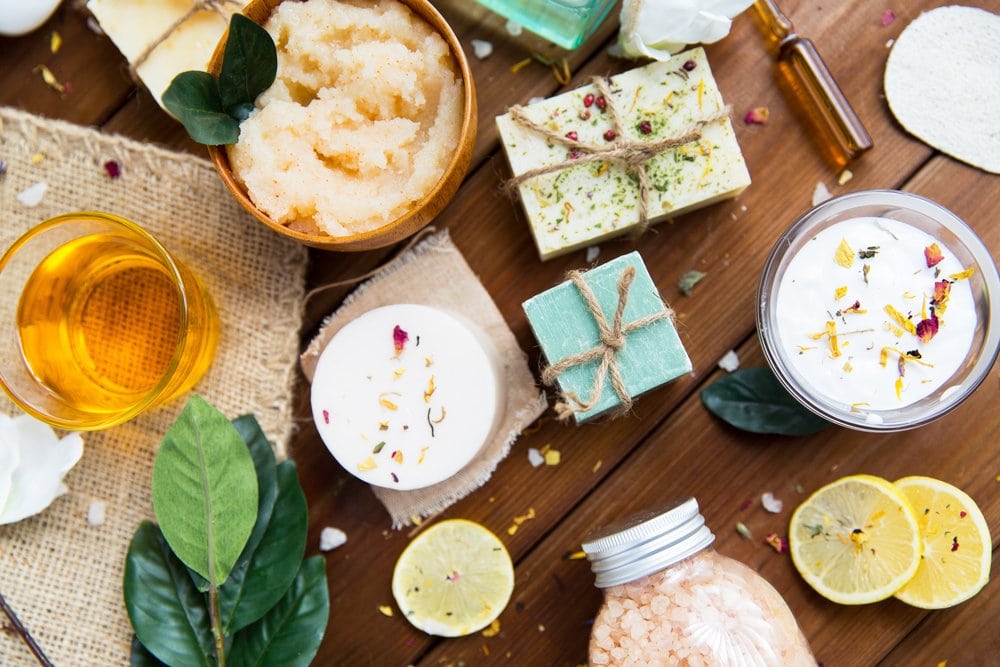
WHAT CLASSIFIES SOMETHING AS VEGAN?
For a product to be vegan it must contain no ingredients derived from animals.
WHAT IS THE VEGAN SYMBOL ON FOOD?
In the UK, it’s not legally required for vegan food to be labelled as such and there are a number of different symbols used by companies to indicate that food is vegan. A vegan symbol you might see on food is a “V” with a leaf, or you may simply see the words “suitable for vegans”.
Some products will be certified vegan by a third party, like the Vegan Society. The Vegan Society’s Vegan Trademark appears on more than 60,000 food, drink, and other products globally: it is the word “vegan” with a sunflower in a circle. In order for their products to be certified, a food producer must store and prepare the food separately from non-vegan dishes, endeavour to eliminate the risk of cross-contamination, and show evidence that employees making and handling the food are trained in the best practices of handling vegan products. No animal products can be used in the manufacture or development of the product and ingredients must not be tested on animals.
HOW TO KNOW IF SOMETHING IS VEGAN
A vegan symbol or the words “suitable for vegans” on the packaging are the easiest ways to identify vegan products, but it’s not the only way, as not all vegan products are labelled as such.
HOW TO TELL IF A PACKAGED FOOD IS VEGAN
VEGAN LABELLING
Apart from a vegan symbol, some products might say “suitable for vegans”. Sometimes you might come across foods that appear from the ingredients to be vegan but will only be labelled as “suitable for vegetarians”. This can be confusing. You’ll need to read the ingredients list at this point to see if it is fully vegan. Other products labelled as “plant-based” or “free from” might or might not be vegan. Again, if the labelling doesn’t seem clear to you, there are other ways to check that the product is vegan.
ALLERGEN INFORMATION
In the UK, there are 14 main allergens that must be emphasised in the ingredients list, for example by being in bold or underlined. These include crustaceans, molluscs, fish, eggs, and dairy. So, if the product is vegetarian and contains none of these, you’re almost certainly looking at a vegan product… unless it contains honey.
READ THE INGREDIENTS
One animal product that is not considered an allergen is honey, so it’s still worth reading the full list of ingredients instead of just looking for the highlighted allergens if you are unsure. Honey is often used in breakfast cereals.
HOW TO TELL IF PERSONAL CARE ITEMS AND COSMETICS ARE VEGAN?
Personal care and cosmetics products may bear a vegan symbol in the same way as vegan food. If they don’t, they may still be vegan but it can be much harder to tell than it is with food, given the huge variety of animal-derived ingredients used in them, as well as the weird names the ingredients are often given.
VEGAN LABELLING AND INGREDIENTS LISTS
In addition to looking for a vegan symbol or other identifier on a personal care or cosmetic product, sometimes it can be useful to find out which companies they have been produced by. There are a number of resources online that tell you which companies are safe as regards their treatment of animals and which to avoid, like the Cruelty-Free Kitty blog. Shops like Superdrug are also good at labelling which products are suitable for vegans.
We’ll cover some of the common non-vegan ingredients to look out for below.
ANIMAL TESTING
As noted above, the Vegan Society’s Vegan Trademark guarantees that a product does not contain ingredients that were tested on animals. But products can be marketed as vegan even if the ingredients were tested on animals. So in addition to looking for vegan labelling on products, it may be necessary to look out for a cruelty-free label or certification, such as PETA’s leaping bunny.
WHAT INGREDIENTS ARE NOT VEGAN?
These are some of the non-vegan ingredients that may be found (often unexpectedly) in food and / or non-edible consumer goods.
MILK SOLIDS
Milk solids are small particles that are often added to food to give it a uniform texture and stop water separating out from the rest of the product. You’ll find them in things like chocolate bars, some margarine, and some sweets.
SHELLAC / E904
Shellac is a resin taken from female lac bugs who live in India and Thailand. It is used to make varnish or glaze for things like wood and some musical instruments, but is also used in many edible products. Some pills are coated in it while it is also frequently used as a “wax” coating on apples and citrus fruits to prolong their shelf life, in which case it is identified as an “E” number — food additive E904.
L-CYSTEINE
L-cysteine is a non-essential amino acid, though it is important to help your body produce the antioxidant glutathione. It is sometimes made from goose and duck feathers, pig bristles or hooves, or even from human hair, and is found in hair care products but also occasionally in bread, because it is used as a reducing agent in baking. It’s possible to create it synthetically or from plants though, so look for whether a product containing it states that it is plant-derived or else use vegan labelling and certification to guide you.
ASPIC
Aspic is a gelatin made from animals’ bones. It’s most commonly used as a jelly mould around meats, but can also be used to glaze vegetables. It’s possible to make a plant-based version, so if you come across food set in savoury jelly that seems vegan-friendly it’s best to check what the jelly is actually made from first.
LANOLIN / E913
Lanolin is a wax or grease secreted by sheep. It’s used in a lot of cosmetics and personal care products, as a topical balm to treat conditions like arthritis, and in commercial products including lubricants and shoe polish. It is also found in chewing gum, but may only appear as “gum” in the ingredients list. In other products it may appear as E913.
MONO- AND DIGLYCERIDES
Mono- and diglycerides are food additives known as emulsifiers, used to keep oil and water from separating. They can be made from plants or animal fats, and it’s unlikely to be clear which source is used when you see them in an ingredients list. They may also appear using other names, including distilled mono- and diglycerides ethoxylated, mono- and diglycerides, mono- and diglyceride esters, and diacylglycerol oil. They can appear in food products like soft drinks, margarine, and sweets.
COLLAGEN
Our bodies produce their own collagen but people might take collagen supplements due to a reduction in this natural production, or get cosmetic procedures like skin fillers that use collagen. Collagen supplements are usually made from the skin and connective tissue of cows and other animals.
LACTOSE
Lactose is a sugar found in milk. It appears in products other than dairy, including some medications, artificial sweeteners, and processed grain products like crackers and cereals. It may not be listed as an ingredient, and may appear as “milk” or “cream”. Ingredients with similar names like lactic acid and sodium lactate sound like they contain lactose but they actually don’t.
BUTTER
Butter is commonly found in pastries and other baked goods and may appear in foods that are premade or cooked in restaurants.
LARD AND TALLOW
Lard and tallow are not quite the same. Tallow is rendered fat from cows and sheep and can be used for cooking as well as for making products like soap and candles. These non-edible products are the ones that are more likely to catch out a vegan, so it’s good to check the ingredients of such items. Lard is rendered pork fat that has a different texture to tallow and is used primarily for cooking.
GHEE
Ghee is clarified butter, meaning the butter is simmered and the clear liquid separated out from the solid residue. It is used frequently in Indian cooking, so if you’re going to an Indian restaurant it’s important to ask what the food was cooked in. Many will be able to provide for vegans by cooking the food separately in vegetable oil.
CURD AND YOGHURT
Curd and yoghurt are both made by fermenting milk, but they are distinct from each other. Yoghurt or powdered yoghurt is often an ingredient in foods like cereal bars and naan bread. Curd is less likely to appear as an ingredient in manufactured foods and more likely to be included in a dish as it is.
PEPSIN
Humans produce pepsin in our stomachs, but the commercial version is taken from the stomachs of pigs. It is a component of rennet which is used to make some cheeses and can also be used to split proteins into water-soluble components — as in the processing of gelatin or soy protein. It’s also used by the leather industry to remove remaining hair and tissue from animal hides.
MALAI
Malai is a type of clotted cream from India. It’s found in several kinds of Indian dishes such as desserts.
VARAKH / EDIBLE SILVER FOIL
Varakh, or edible silver foil, is also used mainly in Indian desserts as decoration. It is a thin foil produced by pounding silver metal between pieces of animal skin, or sometimes using ox guts. Some companies in India make vegan varakh by manufacturing it using machines.
WHEY PROTEIN
Whey protein is derived from whey, which is the liquid part of milk left over during the production of cheese. It’s mainly used as a protein supplement in protein powders.
CASEIN
Casein is the other protein found in milk. It’s also used in protein supplements and is sometimes used to clarify beer.
KHOYA
Khoya is made by drying milk or thickening it through heating and is used in many Indian sweets.
ALBUMEN
Albumen is the white of eggs. It is used as a clarifying agent for red wines and in lots of processed foods because of its foaming properties, such as artificial crab meat, protein shakes, and marshmallows.
HONEY
Honey provides bees with food during winter months, so when it’s harvested, this important source of nourishment is taken away from them. Most honey comes from bees who are commercially farmed. Honey is used in a variety of food products such as cakes, snacks, and cereals, as well as in personal care products and candles.
ROYAL JELLY
Royal jelly is another substance produced by bees which is meant to nourish bee larvae and queen bees. It’s used in alternative medicine and is sold as a dietary supplement.
CASTOREUM
Castoreum is a substance produced from the backsides of beavers to mark their territories. Because it smells like vanilla it was used to make perfumes and added to food for years, but it’s unlikely to feature in many products these days.
GELATIN / E441
E441 gelatin is a gelling agent made from the skins and bones of pigs and cows. Lots of sweets contain gelatin, as do some margarines and cosmetics. It can also be used in the production of vinegar and wine.
ANCHOVIES
Anchovies are small fish that are often found tinned in supermarkets. Anchovy populations are suffering from overfishing to feed farmed animals and fish, as well as to supply a growing market for omega-3 supplements.
ISINGLASS
Isinglass is a gelatin made from the dried swim bladders of fish species such as sturgeon and cod, and is also known as ”fish glue”. It has been in use since the 19th century to clarify beer and wine.
FISH SAUCE
Fish sauce is made by fermenting fish with salt and is a common ingredient in Asian food, especially in Thailand. Even dishes that don’t contain fish or meat may be cooked with fish sauce in Thai and other Asian restaurants.
COD LIVER OIL
Cod liver oil is primarily used as a dietary supplement and is exactly what it sounds like.
RENNET
Rennet is a set of enzymes (of which pepsin, described above, is one) produced in the stomachs of animals like cows and sheep. Usually a byproduct of the veal industry, rennet is used in manufacturing some cheeses.
CULTURED DEXTROSE
Cultured dextrose is created by adding together dextrose, a sugar, with a type of bacteria that is found in dairy products but that can also be extracted from soil. Used to prolong the shelf life of a variety of foods such as sauces and salad dressings, most cultured dextrose you see on food packaging will be made using dairy-sourced bacteria.
CARMINE / E120
Carmine, which also has the food additive E number E120, is made by grinding up cochineal insects who are native to North and South America. With a reddish hue, it is used as a food colouring in products including drinks, sweets, and sauces.
WHAT FOODS ARE SURPRISINGLY NOT VEGAN?
There are some foods that really seem like they should be vegan but turn out not to be, or at least not in all cases. Bagels are one example, as they sometimes contain L-cysteine. Some brands of crisps contain milk powder, as do some crackers and store-bought breadcrumbs. Breath mints may contain animal-derived stearic acid or gelatin, as Extra Strong Mints do. Fresh pasta often contains eggs, and some meat alternatives contain egg whites.
CONCLUSION
Animal-derived ingredients can make their way into all sorts of products, so it’s essential for vegans to know what to look out for when buying food or products like shampoo and makeup. Luckily a lot of vegan products are now labelled as such — though not all are and not all are also cruelty-free. But the longer you’re vegan, the more familiar you’ll be with which kinds of products and ingredients are made without harming animals and which are not.
